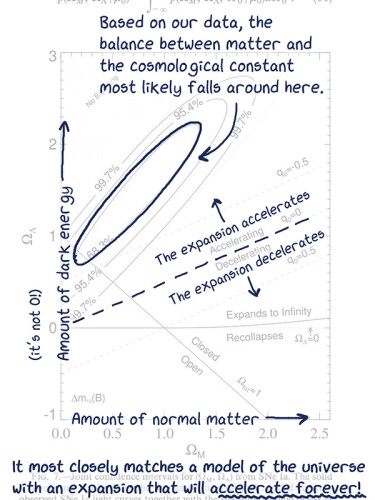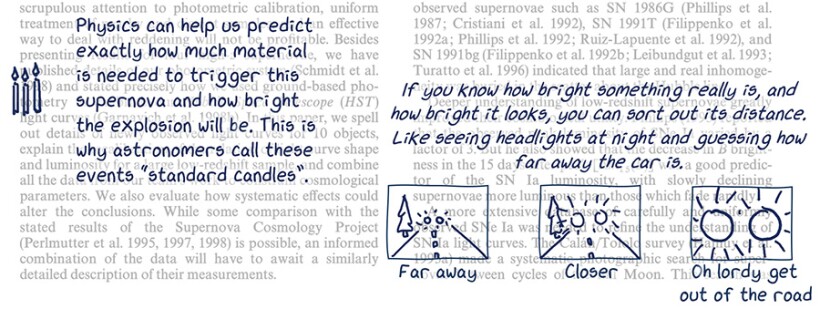Translating scientific papers for the public

Claire Lamman for Physics Today
Communicating scientific results to a general audience is difficult. Communicating the tangle of methods and analysis that support neatly packaged results, not to mention the uncertainties, is even more challenging. To lift the hood on the process, I suggest a method to communicate science in the most direct way possible: by doodling annotations on scientific papers.

A doodle summary can deemphasize the jargon and symbols on plots and highlight the takeaways.
Claire Lamman for Physics Today
This idea came about when my mom mentioned that she was excited to read a recent paper of mine. The research was on a subtle systematic effect in cosmological surveys, specific enough that I worried even people in my field would have difficulty understanding it. I wanted to annotate the paper
The annotated-paper approach has proven to be a multiuse tool. It’s helpful for describing my work to colleagues, sharing the content of papers with undergraduates, and explaining to the public what actually goes into a scientific paper. I’ve found that general audiences are often surprised by how much work underlies a single result, and how much of a paper scientists may devote to describing all the reasons they may be wrong. The paper summary enables deep-level understanding of a scientific project without the need to wade through the detailed text of the paper itself. It’s also a clean way to visually communicate the most important ideas in plots and tables.
Other scientists have now made similar summaries
Here, I demonstrate the doodle translation on a widely known study that was published 25 years ago: the Astronomical Journal paper

A combination of text and simple illustrations can help distill lengthy sections of a paper for a lay audience.
Claire Lamman for Physics Today
I’ve translated the 1998 Riess et al. paper for a more general audience by summarizing the main ideas in each section and including brief background when necessary (along with fun doodles even when not necessary). In the true spirit of scientists reading papers, you may not want to wade through the entire document. However, I hope it’s an entertaining demonstration of the value of communicating science directly from the source.
Claire Lamman is a cosmologist, science communicator, and PhD student at Harvard’s Center for Astrophysics.